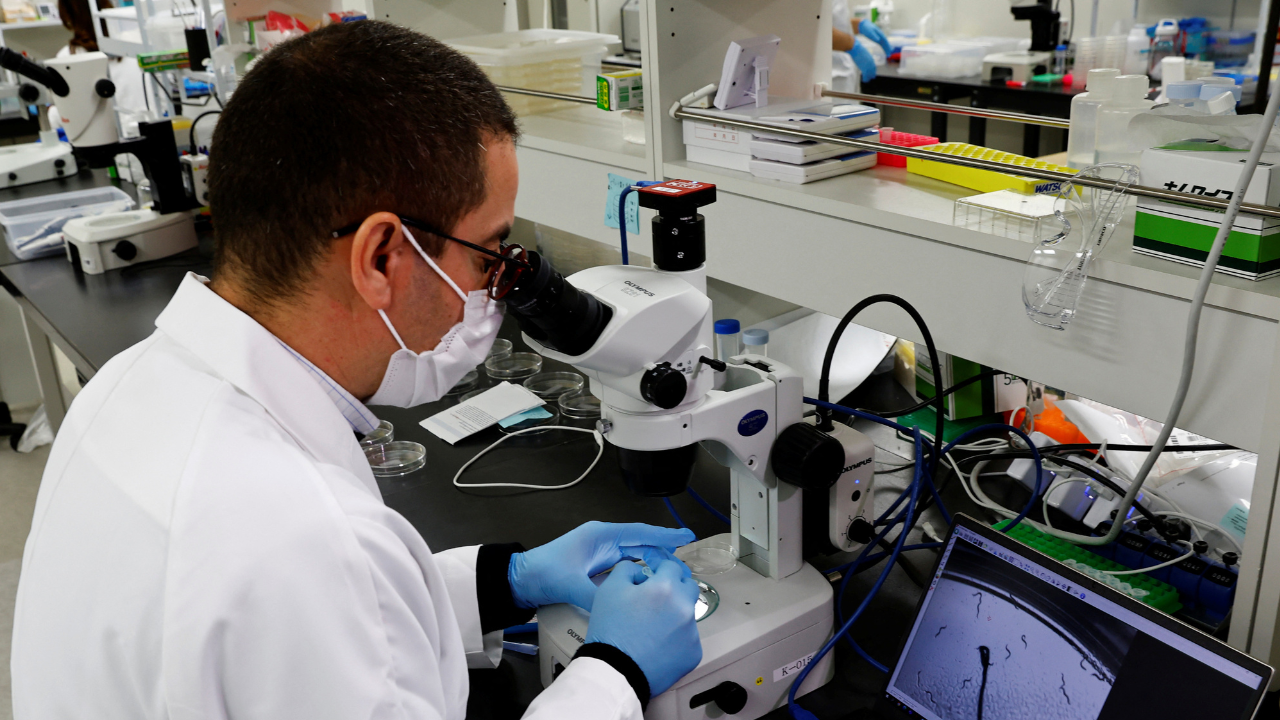The Y chromosome, which determines the sex of human and other mammal babies, is slowly degenerating and may disappear within a few million years, raising fears of extinction. However, a 2022 study on the Sry-deficient Amami spiny rat suggests that humans might evolve a new male-determining gene, offering hope of survival despite the Y chromosome‘s decline.
A study published in the ‘Proceedings of the National Academy of Sciences‘ has revealed how the spiny rat, a rodent species native to Japan, has developed an alternative male-determining system after losing its Y chromosome entirely. This breakthrough may provide clues about how humans might adapt inthe future. This study is trending on Google.
In most mammals, including humans, females possess two X chromosomes while males have one X and a much smaller Y chromosome. Despite its size, the Y chromosome carries the all-important SRY gene, which triggers the development of male characteristics in embryos. Around 12 weeks after conception, SRY activates a genetic pathway that leads to the formation of the testes, which produce the male hormone testosterone, ensuring the baby develops as male.
The SRY gene was discovered in 1990 and was found to trigger SOX9, a gene crucial for male determination across all vertebrates. SOX9 doesn’t reside on the sex chromosomes, but it is activated by the SRY gene, making it essential for male development.
However, the human Y chromosome is shrinking. It has lost around 900 genes over the last 166 million years, leaving only 55 active genes remaining. At this rate, the Y chromosome could disappear within the next 11 million years. This alarming possibility has sparked intense debate among scientists, with some arguing that the Y chromosome will persist indefinitely, while others believe its extinction is inevitable.
Yet, the survival of certain rodents without a Y chromosome offers a glimmer of hope. The mole voles of Eastern Europe and the spiny rats of Japan have both managed to survive and reproduce despite losing their Y chromosomes. The X chromosome remains, but in a single or double dose in both sexes.
While researchers have yet to uncover how mole voles determine sex without the SRY gene, a team led by Asato Kuroiwa from Hokkaido University has made significant progress with the spiny rat. The team discovered that most of the Y chromosome genes in these rats had been relocated to other chromosomes, yet they could not locate SRY or any gene that might replace it.
However, they eventually identified a small duplication near the SOX9 gene on chromosome 3 in male spiny rats. This tiny difference, a duplication of just 17,000 base pairs, was present in all males but not in females. The researchers believe this duplication contains the switch that normally turns on SOX9 in response to SRY, allowing the gene to function without the Y chromosome.
A “war” of the sex genes could lead to the separation of new species, which is exactly what has happened with mole voles and spiny rats.
This discovery raises the possibility that humans, too, could evolve a new sex-determining gene. But it also carries risks. Different populations might develop different systems, potentially leading to the emergence of new human species, separated by their unique sex-determining mechanisms. In 11 million years, Earth could be home to several distinct human species – or none at all.
This is a 2022 research paper but has found its way at the top on Google trends.
A study published in the ‘Proceedings of the National Academy of Sciences‘ has revealed how the spiny rat, a rodent species native to Japan, has developed an alternative male-determining system after losing its Y chromosome entirely. This breakthrough may provide clues about how humans might adapt inthe future. This study is trending on Google.
In most mammals, including humans, females possess two X chromosomes while males have one X and a much smaller Y chromosome. Despite its size, the Y chromosome carries the all-important SRY gene, which triggers the development of male characteristics in embryos. Around 12 weeks after conception, SRY activates a genetic pathway that leads to the formation of the testes, which produce the male hormone testosterone, ensuring the baby develops as male.
The SRY gene was discovered in 1990 and was found to trigger SOX9, a gene crucial for male determination across all vertebrates. SOX9 doesn’t reside on the sex chromosomes, but it is activated by the SRY gene, making it essential for male development.
However, the human Y chromosome is shrinking. It has lost around 900 genes over the last 166 million years, leaving only 55 active genes remaining. At this rate, the Y chromosome could disappear within the next 11 million years. This alarming possibility has sparked intense debate among scientists, with some arguing that the Y chromosome will persist indefinitely, while others believe its extinction is inevitable.
Yet, the survival of certain rodents without a Y chromosome offers a glimmer of hope. The mole voles of Eastern Europe and the spiny rats of Japan have both managed to survive and reproduce despite losing their Y chromosomes. The X chromosome remains, but in a single or double dose in both sexes.
While researchers have yet to uncover how mole voles determine sex without the SRY gene, a team led by Asato Kuroiwa from Hokkaido University has made significant progress with the spiny rat. The team discovered that most of the Y chromosome genes in these rats had been relocated to other chromosomes, yet they could not locate SRY or any gene that might replace it.
However, they eventually identified a small duplication near the SOX9 gene on chromosome 3 in male spiny rats. This tiny difference, a duplication of just 17,000 base pairs, was present in all males but not in females. The researchers believe this duplication contains the switch that normally turns on SOX9 in response to SRY, allowing the gene to function without the Y chromosome.
A “war” of the sex genes could lead to the separation of new species, which is exactly what has happened with mole voles and spiny rats.
This discovery raises the possibility that humans, too, could evolve a new sex-determining gene. But it also carries risks. Different populations might develop different systems, potentially leading to the emergence of new human species, separated by their unique sex-determining mechanisms. In 11 million years, Earth could be home to several distinct human species – or none at all.
This is a 2022 research paper but has found its way at the top on Google trends.
Source : Times of India









